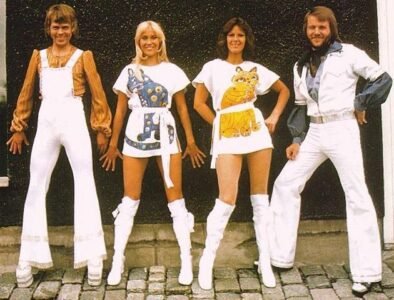The 1970s Disco Fashion era was a time of glitz, glamour, and vibrant style. It was a period defined by music, dance, and a unique fashion culture that swept across the world. Disco fashion was all about boldness, with flashy fabrics, shimmering sequins, and eye-catching colors taking center stage. In this era, fashion became a form of self-expression and liberation, with people embracing their individuality through flamboyant outfits and accessories. Discotheques like Studio 54 became the playgrounds of the fashionable elite, where celebrities and regulars alike showcased their most extravagant looks. In this guide, we’ll explore the key elements of 1970s disco fashion, from iconic clothing items to hairstyles, makeup, and the cultural influences that shaped this iconic era of style and self-expression.
TABLE CONTENT
- Key Elements of 1970s Disco Fashion
- Iconic Clothing Items
- Hairstyles and Makeup
- Influential Designers and Brands
- Celebrity Influences
- Gender and Fashion
- Dancing and Fashion
- Disco Fashion Evolution
- Legacy of 1970s Disco Fashion

Key Elements of 1970s Disco Fashion
Glitter and Sequins
Disco fashion was all about shimmer and shine. Glittery fabrics and sequins adorned clothing, reflecting the disco ball’s sparkling lights on the dance floor. Dresses, jumpsuits, and even shoes were embellished with these eye-catching details, adding glamour and excitement to every outfit.
Metallic Fabrics
Metallic fabrics like lamé and lurex were popular choices for disco attire. These shiny materials reflected light and created a dazzling effect, perfect for capturing the disco’s vibrant atmosphere. Whether in the form of dresses, tops, or accessories, metallic fabrics added a futuristic and glamorous touch to disco fashion.
Bold Colors
Disco fashion embraced bold and vibrant colors that popped under the nightclub’s lights. Electric blues, fiery reds, and shimmering golds were popular choices, expressing the era’s exuberance and optimism. Colorful outfits allowed disco-goers to stand out and express their individuality on the dance floor, creating a visually dynamic atmosphere.
Form-Fitting Silhouettes
Form-fitting silhouettes were a hallmark of disco fashion. Clothing like jumpsuits, wrap dresses, and bell-bottom pants hugged the body’s curves, accentuating dancers’ movements and creating a sleek and sexy look. Tight-fitting garments were both fashionable and functional, allowing dancers to move freely and confidently as they grooved to the disco beat.
Platform Shoes
Platform shoes were a staple of disco fashion, adding height and glamour to any outfit. Both men and women rocked platform heels and boots, often adorned with glitter or metallic accents. These shoes not only made a bold fashion statement but also helped dancers command attention on the dance floor with their elevated stature. Platform shoes were the perfect finishing touch to any disco ensemble, completing the iconic look of the era.
Clothing Items in 1970’s Disco Fashion
Dancing and Fashion of 1970s Disco Fashion
written by :-https://backup.bioleather.in/
